Mulshi Satyagraha: Remembering India’s First Anti-Dam Struggle in its 100th Year
The first anti-dam struggle in India and possibly even the world was against the Mulshi dam, built at the confluence of the Mula and Nila rivers near Pune in western Maharashtra.
Popularly known as the Mulshi satyagraha (insistence on truth), this struggle was led by Pandurang Mahadev (Senapati) Bapat and V.M. Bhuskute in the early 1920s, spreading across not only the 52 submergence villages of the dam, but even outside, right up to Pune and beyond. What is important about this struggle a hundred years ago is that even women participated in large numbers and were jailed. Reference to the satyagraha can be found in the diaries of Mahadevbhai Desai, Mahatma Gandhi’s close aide, in entries referring to the period when the two of them had been jailed in Pune’s Yerawada prison where the oustees of the dam were also imprisoned in 1923.
The Mulshi satyagraha was against the Tata company that ultimately succeeded in building the dam to provide electricity to Mumbai, crushing the people’s resistance. Though the dam was built in the mid-1920s and has been operational since then, it is natural that the local people of the Mulshi taluka in Pune district, many of them the third generation of the families ousted by the dam, wish to commemorate the Mulshi satyagraha on its centenary this year.
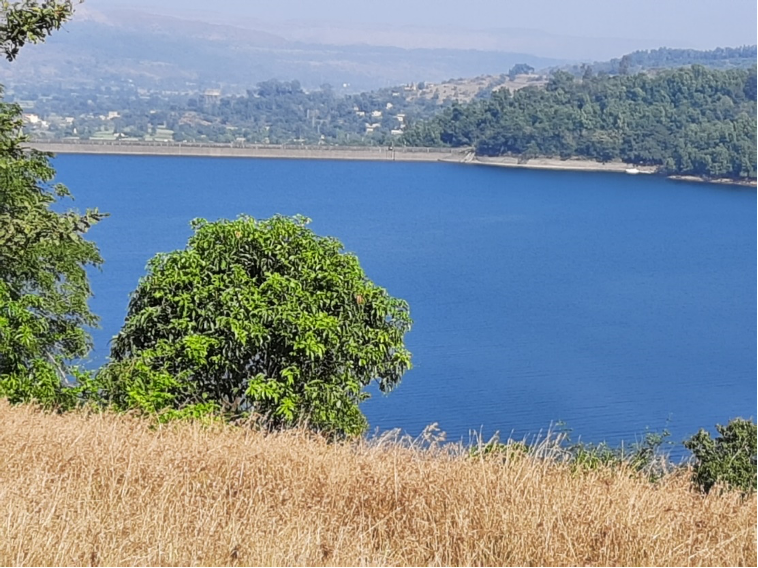
Mulshi dam and its reservoir. Photo: Nandini Oza
Submerged in problems
On this special occasion, I visited some of the submergence villages with a group of enthusiastic and committed local leaders who have taken it upon themselves to focus on the many issues that the oustee families continue to face because of this dam.
To say I was shocked to find the many problems the subsequent generation of the oustee families have been facing would be an understatement. In one village affected by the dam, when I remarked to the village people that their village was beautiful, I was taken aback by the reply of an elderly gentleman. One of the few remaining from the second generation of oustees, this gentleman said in a melancholy voice, “Sister, where is it our village? It is Tata’s village.”
This is because many of the 52 villages that were submerged to build the dam were re-built by the oustees on the periphery of the reservoir on a higher altitude, as no land for rehabilitation was provided by the colonial British government or the Tata company when the dam was filled. And these lands to which people were forced to shift after their own villages and prime agricultural lands were submerged are called ‘Tata lands’ because large areas are owned by the Tata company. In fact, the whole of Susala island belongs to the Tata company, although oustee families live and cultivate land there.
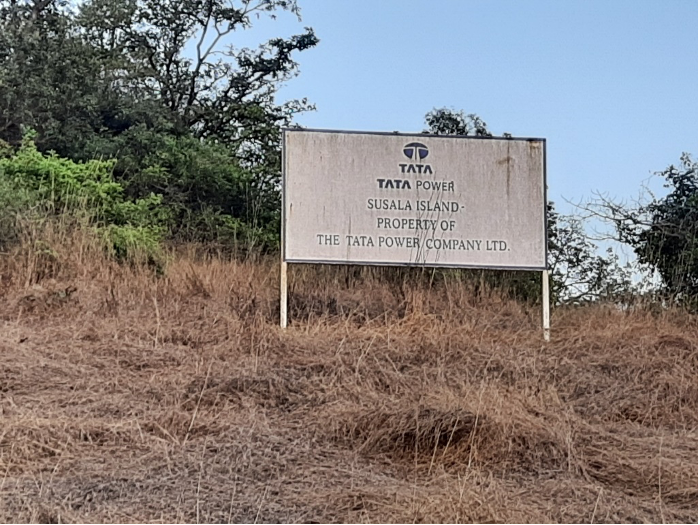
The land belongs to the Tata company. Photo: Nandini Oza
Over the next three days as we visited village after village that had been affected by the dam, the issues of the people were the same: they had no ownership rights. “We are living at the mercy of the Tata company,” they said.
A few oustees do have plots of land, complete with land titles, up in the hills above. But these are not fit for cultivation. The plots are rocky, forested and home to wild animals and there is no irrigation although the reservoir is just a short distance away. It is mostly the second generation of oustees who live in these villages as the third generation has been forced to move out due to lack of employment opportunities and no ownership rights to build homes. In some of the villages it was heartrending to see that only old couples remain.
“Do you see anyone young playing here? I don’t like it because only old people remain. But what do we do? Will the young stay here with no work and no permission to build a home as we do not have our own gaothan (village residential land)?” an elderly woman lamented.
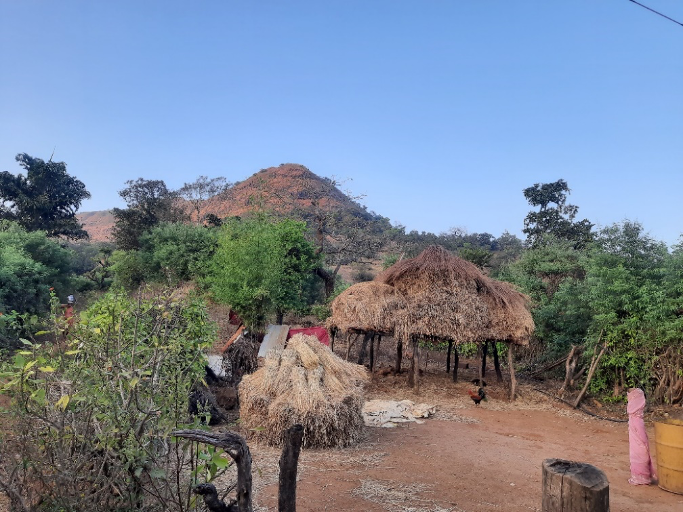
Agriculture in one of the villages on Tata-owned land. Photo: Nandini Oza
All possibilities dammed
The small number of youths we met in the villages said they wished to return from the cities to their ancestral villages and would do so if the Tata company allowed reservoir fishing, which is an accepted practice elsewhere. The reservoir offers the possibility of fish production running into hundreds of tonnes. If, along with that, the Tatas allowed eco-tourism in these stunningly beautiful villages in the Western Ghats, there would be no dearth of employment opportunities for the locals.
Though the Tatas have a long history in the hotel business, the local people do not wish to have luxurious five-star hotels in the region, but eco-friendly tourism culturally in tune with the local way of life and in the local people’s control. Many other ideas for income generation have been discussed in these villages, for instance, training the youth in the collection and sale of minor forest produce that is available in plenty in the surrounding areas.
While the generation of local employment would help promote the much-required reverse migration from cities, a man in his forties who moved out of his village in search of work, said, “The Tata company, by not allowing employment for the local people here, has ensured that in the next 10 to 15 years, once our older generation is dead, this area will be free of oustees.”
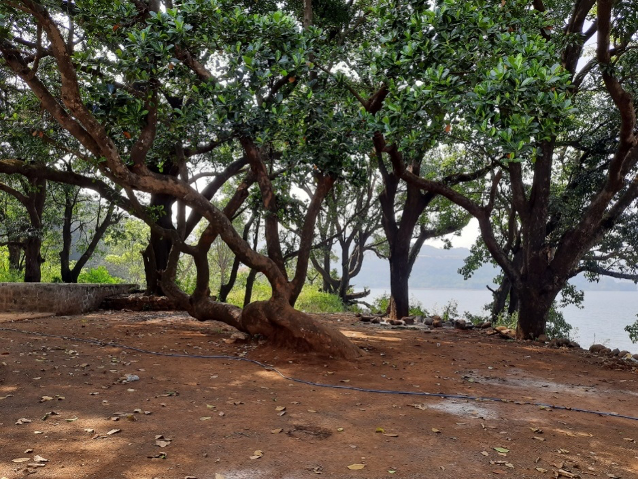
Courtyard of village Dhokalwadi on Tata-owned land. Photo: Nandini Oza
Some families we met paid rent till a few decades ago for the lands they cultivated which ‘belonged’ to the Tata company. However, the company has stopped collecting rent, making people feel insecure as, without rent receipts, they are afraid they will not be allowed to cultivate these lands in future.
“Patrolling by Tata people has increased. If they find people adding a room or two to their homes, they directly serve notices and take people to court,” many reported. Although vast tracts of land remain out of the water, they are owned by the Tata company. It would be interesting to do an audit of the land owned by the company around the reservoir.
Building walls, not bridges
While the people in these villages struggle, as soon as one steps out of the submergence villages, one can hear different voices. Large land owners and money lenders displaced by the dam back then were given huge amounts of cash; so much that it would not fit in their bullock carts, people say! Even now, the Tata company contracts a few of the local people to build roads and do small works here and there. It has built a school and a hospital that has benefitted the locals, they say. But then again, voices among the youth said, “Should this not be done by the government? Why does Tata own this place?”
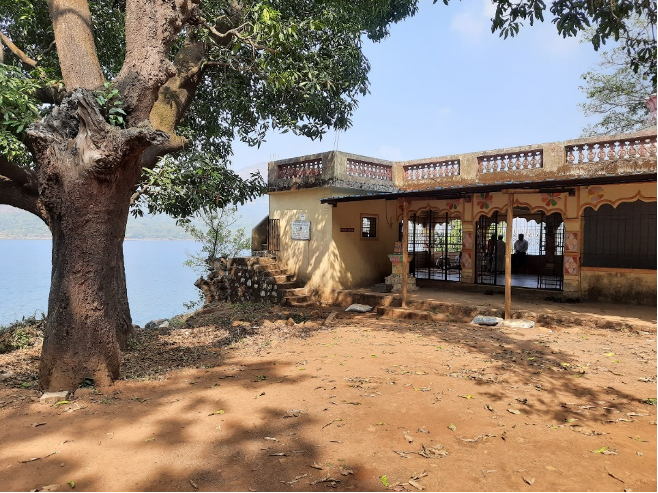
Temple and its courtyard in village Dhokalwadi on Tata-owned land. Photo: Nandini Oza
The families of the displaced who continue to live in the partially submerged villages continue to face newer problems. For example, the company is now building a five to six feet high wall around the reservoir and large parts of it have already been built. This wall has disturbed the movements of domestic cattle and the wildlife that approaches the water. Some gaps for wildlife movement have been made in the walls, but this has made it easy for hunters to trap the animals for meat. It is important to know if this wall, which is still under construction, needs an environment impact assessment or not. This is particularly important since some of this area has been recommended the status of an eco sensitive zone according to the report of the government-constituted Western Ghats Ecology Panel.
The Mulshi dam itself, which it is nearing its 100th year of existence, is getting old and weak and that has created fresh problems.
“The dam was almost rebuilt like new between 1995-98, with large scale reinforcement pillars. This led to new blasting for stones in the old quarry and we lost our fresh water streams,” said a resident of Jamgaon.
Downstream, the periodic release of dam waters in great force over the years has eroded lands on both sides of the rivers. “In order to have the Tata company build a retention wall to stop my land from eroding due to water releases from the dam, I had to fight for seven years! Nowhere else has the company tried to prevent such erosion,” said a man in village Male.
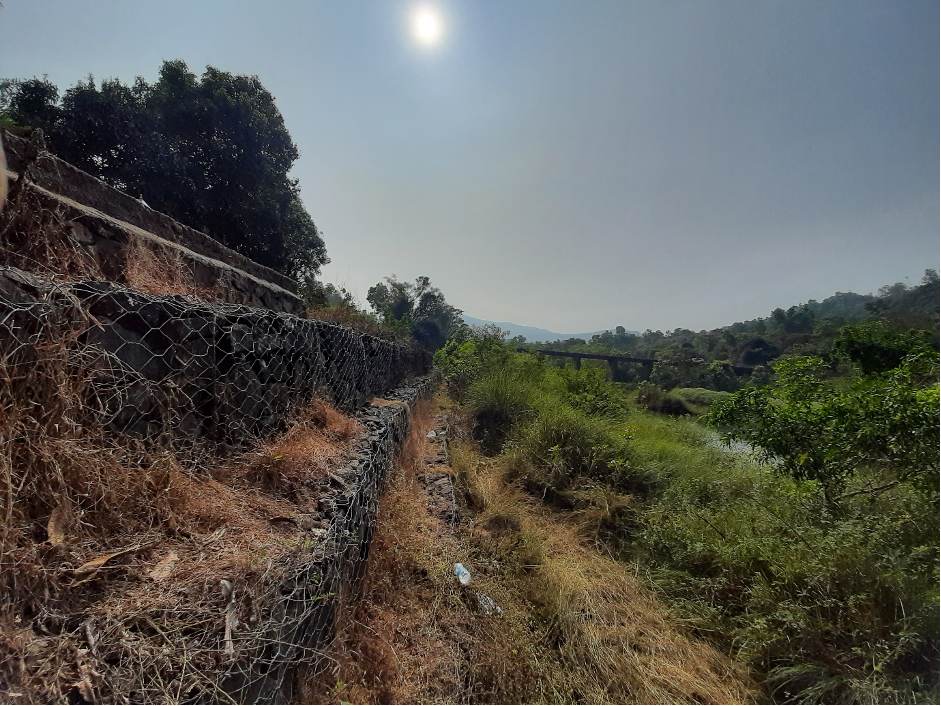
Retention wall to stop land erosion downstream of Mulshi Dam. Photo: Tejas Pawar
As with all the dams in India, downstream impacts have not been accounted for here and the fish source has been impacted severely. Another acutely-felt problem is that waters from the water-stressed regions of the Krishna Basin in Maharashtra continue to be diverted through this dam for its power generation to the water-surplus regions of the coastal belt. This issue has become so contentious that on January 2, 2021, Ajit Pawar, the deputy chief minister of Maharashtra, was quoted in the Times of India as saying: “We are planning to draw water from Mulshi dam to meet the drinking water needs… Tata should stop power generation at the dam… There is already surplus power generation in the country.”
Drowning history
To me, as an oral history practitioner, the insult to the injury is that the history of this anti-dam struggle has also been appropriated by the dam builders, the Tatas. It is the Tata company that has built a cement-stone plaque in memory of Senapati Bapat, who spent several years in jail for leading the Mulshi satyagraha that was crushed by the company!

Plaque in memory of Senapati Bapat erected by the Tata company. Photo: Nandini Oza
Ironically, the inscriptionon the plaque has no reference to the struggle led by Senapati Bapat and it is difficult to approach the site as the gates often remain locked.
Even the school built by the Tata company has been given the name of Senapati Bapat and it was sad to see Senapati Bapat’s photo in the same frame as the photo of Jamshedji Tata, the then head of the company that built the dam.

Senapati Bapat and Jamshedji Tata, the then Tata company owner, in same frame. Photo: Nandini Oza
This is when books about the Mulshi satyagraha remain out of print and project reports and agreements remain beyond the reach of the oustee families. Religious idols and artefacts remain scattered and unattended on the periphery of the reservoir, while old temples remain submerged.
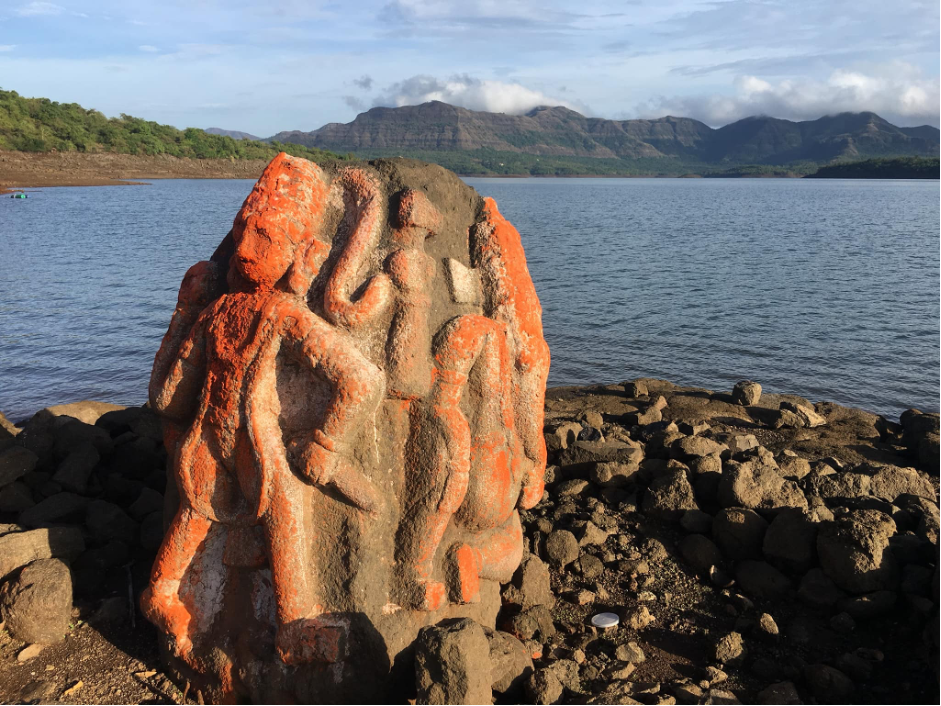
Idols remain unattended on the reservoir’s periphery. Photo: Anil Pawar
In the 100th year of the historic Mulshi satyagraha, while I think the oustee families should be made partners and co-owners of the Mulshi dam and the Tata power project, the least the government can do is to hear the people out. The Mulshi dam-affected people’s generation next is eager to break the silence. They only need sensitive ears.
Nandini Oza is an oral historian and a former activist with the Narmada Bachao Andolan. She can be reached at nandinikoza@gmail.com.
This article went live on February fifth, two thousand twenty one, at zero minutes past seven in the morning.The Wire is now on WhatsApp. Follow our channel for sharp analysis and opinions on the latest developments.




